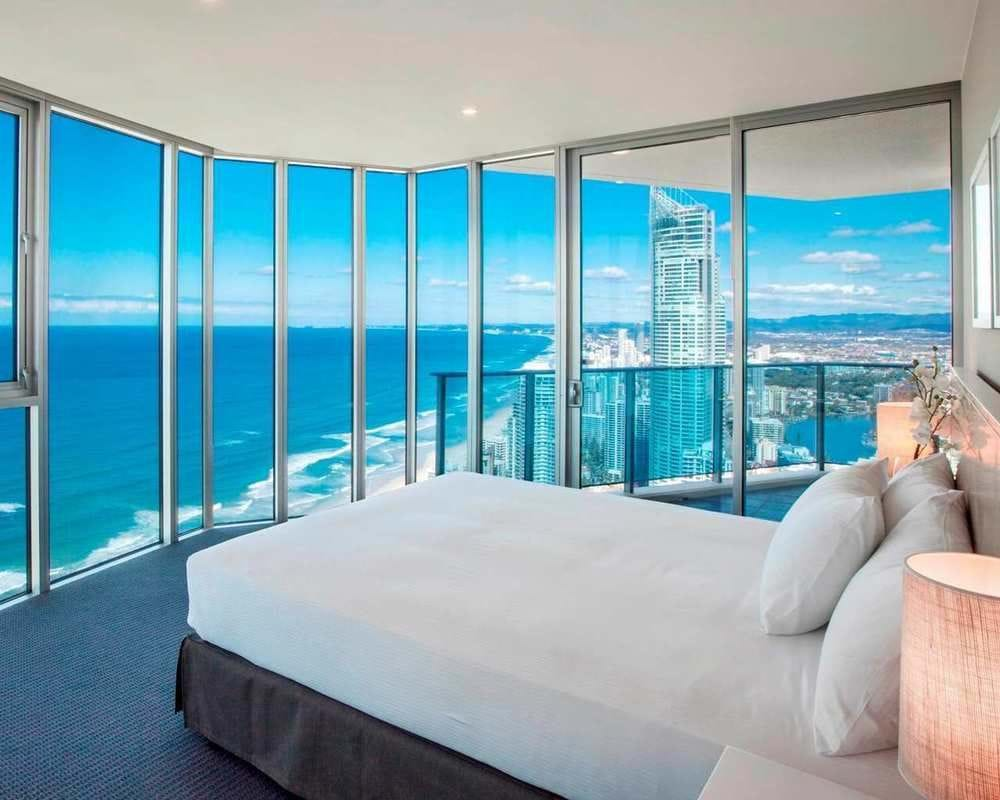

The hotel boasted French doors, parquetry of walnut, rosewood, red bean and blackwood with art deco lead-lighting. Regular rooms at the hotel were $7 per week with shared bathrooms. For many years the tower displayed an advertising sign for the Johnny Walker whisky label.

The new 41 room hotel arguably became the most photographed building on the Gold Coast for 50 years with its red brick and white stucco finish, golden yellow tiles and the unusual circular tower featuring a two-level honeymoon suite which cost newly-weds $20 a week with all meals included. It was officially opened by Mayor Joseph Proud on 25 September 1937.

Construction commenced on 12 October 1936 with the building being completed the following year. Jim immediately announced his intention to rebuild an impressive new brick hotel, designed by Eric Trewerne, with building contractors Mr Tealby and Mr Crick of Ascot. While all the hotel residents and animals in the zoo were unharmed, the goldfish in the hotel did not survive the fire and it was quite an effort however, to regroup the monkeys and lions wandering the streets. The hotel was destroyed by fire on 6 July 1936. The American Bar in the Paradise Room, 1958. The hotel proved very popular in it’s isolated location surrounded by sandy tracks and trees with the town of Elston, eventually renamed Surfers Paradise, growing around the hotel. The 16 room mock-Tudor building included a café and a ballroom. He named the hotel after the real estate subdivision released and marketed as Surfers Paradise Estate in 1917. The Surfers Paradise Hotel, which included a private zoo and cabin accommodation, was erected by Jim Cavill in 1924-25 on the corner of Ferry Road and the South Coast Road. Their hotel was referred to as both the Main Beach Hotel and Meyers Hotel. The area was once known as Elston and the very first hotel in the area was run by the Meyers family, who also operated the Meyers Ferry which crossed the Nerang River from what is now knows as Chevron Island. The corner of Cavill Avenue and Surfers Paradise Boulevard has altered time, but the buildings on this site and the people living and working in them, have been providing a similar service to visitors and residents for 90 years.


 0 kommentar(er)
0 kommentar(er)
